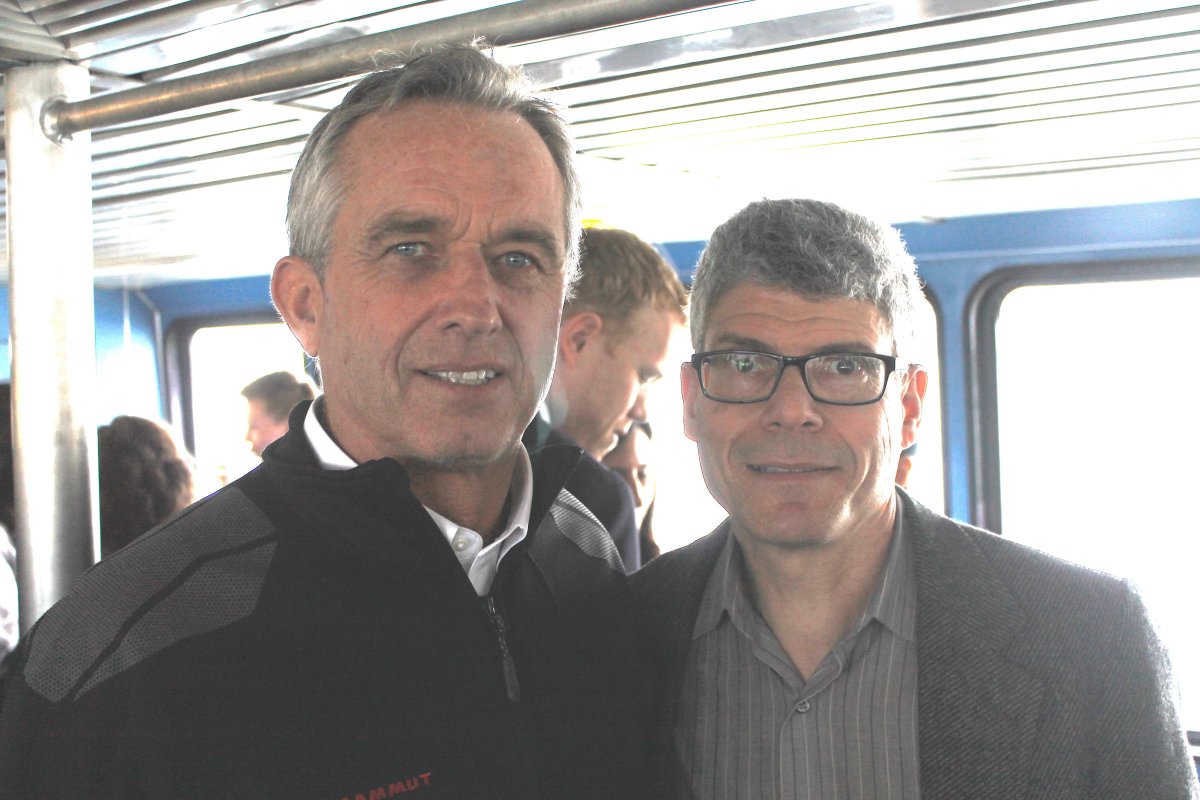BY PAUL DeRIENZO | Environmental activists are cheering a unanimous decision by New York State’s highest court that upholds the right to review applications for renewal of federal licenses to operate two Indian Point nuclear power plants for another 20 years.
The plant’s owners, Entergy Corporation, had argued the plants’ license to operate was grandfathered when the state adopted the Coastal Management Program in 1982. The decision does not close the plant, but its relicensing has been opposed by Governor Andrew Cuomo and environmentalists.
The federal Nuclear Regulatory Commission’s Atomic Safety and Licensing Board has been holding up consideration of the Indian Point relicensing applications pending a determination on the Coastal Management Program review. Cuomo has not moved directly to prevent the N.R.C. from relicensing the facility.
In its Mon., Nov. 21, decision, the Court of Appeals wrote, “Entergy’s current application for a license to operate the Indian Point nuclear reactors for an additional 20 years is a new federal action, involving a new project, with different impacts and concerns than were present when the initial environmental impact statements were issued over 40 years ago.”
Indian Point’s two remaining operating reactors reached the end of their original 40-year operating licenses in September 2013 and December 2015.
In a statement on Nov. 21, New York Attorney General Eric Schneiderman said, “The court has now made it clear that policies protecting New York’s critical coastal resources are a necessary factor in considering whether to relicense the Indian Point facility.”

“This is a monumental day,” Paul Gallay, president of New York-based Riverkeeper, declared. “This decision effectively stops the Nuclear Regulatory Commission from relicensing Indian Point.” Gallay added that, if the plants are closed, electric power needs can readily be met by a combination of other regional power plants, existing surpluses and growing solar power installations in the state.
However, Entergy countered with its own statement, saying “Notwithstanding today’s court decision, we do continue to believe we will ultimately be successful in obtaining a C.Z.M. [Coastal Zone Management] permit and relicensing Indian Point. The facility continues to safely operate in a manner that is fully protective of the Hudson River and in compliance with state and federal law.”
The Coastal Management Program is administered by New York’s Department of State and requires projects to comply with protection of fish and wildlife resources, in order to prevent or minimize environmental damage. The stretch of the Hudson River where Indian Point is located is a tidal estuary, where the freshwater mixes with saltwater from the Atlantic Ocean.
Opponents of the relicensing point to mishaps over the past decade that they say show the nuclear plants — located less than 50 miles from New York City — are unsafe. In 2010, 600,000 gallons of radioactive steam was released into the atmosphere. Earlier this year, radioactive water leaked into the groundwater. A transformer blew up in 2010 and another failed in 2015, causing a shutdown of one of the reactors.
“This is a happy day for New Yorkers, for the Hudson, and for the safety and security of our country,” Robert F. Kennedy, Jr., president of Waterkeeper Alliance, said. “Indian Point is the oldest, most dilapidated, mismanaged and dangerous nuclear plant in America.”
The New York Times has implied that Indian Point could be “America’s Fukushima,” referring to the 2011 disastrous meltdown of nuclear reactors struck by a tsunami in Japan, which was the world’s worst nuclear disaster since Chernobyl. Cuomo wants the Buchanan, N.Y., plant closed and has called the leaking of tritium-contaminated water from it an “unacceptable” failure.
Because the plant is cooled by up to 2.5 billion gallons of Hudson River water each day, the plant kills about 1 billion fish and other aquatic organisms a year. Environmental groups said studies suggest that the Indian Point reactors are a factor in a general decline in the river of shad, white perch, smelt and other fish species.
A proposed natural-gas pipeline is also being planned to run underneath the property, within 100 yards of the nuclear plants. That pipeline, built by Spectra Energy, has been opposed by environmental activists, and 15 were arrested at the offices of U.S. Senator Charles Schumer last month protesting the project, which would bring fracked gas from Pennsylvania into New England. Riverkeeper and the activists want Schumer to come down firmly on the issue and join them in opposing the renewal of Indian Point’s license.

















